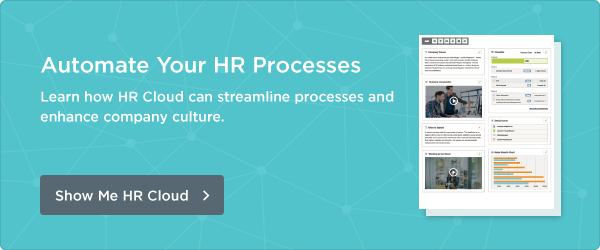

 Cut onboarding time
by 60%—here's the
Ultimate Checklist
that helped do it.
Cut onboarding time
by 60%—here's the
Ultimate Checklist
that helped do it.

When we hear the word “onboarding,” many people think, “It’s what HR does to bring someone new in to the company.” In fact, if you ask most managers about the onboarding process, they generally believe it is HR’s responsibility and that it involves paperwork, benefit forms, parking passes, etc.
But onboarding a new hire is so much more than just filling out a few forms. It’s a consistent process that occurs on a daily basis and continues far beyond the typical 30, 60, or even 90 days.
Onboarding is your opportunity to introduce the organization to new employees; it helps them to understand business and performance goals, vision and values; and makes adjustment and transition a smooth process. Beyond the first 90 days of employment, onboarding ensures questions are answered, training is accounted for, and goals continue to be evaluated with good performance rewarded consistently. The onboarding process evolves over time, as employees progress from new hire to seasoned teammate.
As you can see, onboarding involves more than just paperwork or one department. If done successfully, each employee will understand the significance of onboarding and why it’s so important to play an active role.
So, what’s your role?
If You’re in HR
Typically, you’re the first face to welcome the new hire to the organization. You’re establishing the first step to onboarding, which includes work environment information, computing access, introductions, policies, procedures and paperwork, training, and other administrative matters. Using onboarding software, many of these processes can be completed before the new hire arrives for orientation.
If you’re in HR, you also have the responsibility of training others within the organization about the importance of onboarding. Consider putting together a tool kit for managers; this guide can be beneficial in establishing guidelines, best practices, and suggestions for onboarding.
We've even put together a handy onboarding checklist for new hires - check it out!
If You’re the Supervisor
Supervisors participate in new hire onboarding through discussions around teaming, business unit goals, and performance objectives that help to make your department a success. They establish a one-on-one relationship with your new hire. Supervisors give new hires the full picture of where your team is now, where you’re headed in the future, and how their individual role is linked with the rest of the team.
NASA does a great job of outlining specific onboarding duties for their supervisors. Take a look at what’s working for them and consider incorporating into your own tool box:
• Embed a clear message that safety, the NASA family, excellence, and integrity are what we value.
• Embed a clear understanding of NASA, our goals, and our responsibility to our Nation’s future.
• Ensure that they are familiar with their job, their organization, your performance expectations, and their developmental goals.
• Ensure that they have the opportunities, the challenges, and the direction to launch a satisfying and productive NASA career.
If You’re the CEO
If the onboarding process does not include performance goals, expectations, and visibility into culture and purpose, you are missing out on a prime opportunity to assimilate your new hire from day one.
CEOs should lead from the top. Show that onboarding includes everyone. Find ways the CEO can contribute value by getting them involved. The CEO can show up at orientation to say hello, invite new hires to a special session of the CEO’s “2019 Business Outlook” or send emails to managers reminding them to remain focused on establishing good working relationships with employees.
You’ve heard the saying, “It takes a village.” Well, in fact, it does. It takes everyone. If we understand our role in the onboarding process and stay actively involved, we’ll see an increase in employee engagement and performance.
If you're interested in learning more tricks and tips for onboarding and other HR matters, check out these articles about HR now.
Keep Reading
Global Employee Onboarding: Creating a Seamless Experience Across Borders
In today's interconnected business landscape, companies are expanding beyond geographical
The Compliance Catch-Up: What HR Needs to Fix Before Mid-Year Audits
By May, most HR teams have settled into the rhythm of the year. But compliance? That
Secure Onboarding: Best Practices for Protecting Data with Remote Hires
The option of working from home also means that organizations can hire anyone worldwide;
Like What You Hear?
We'd love to chat with you more about how HR Cloud® can support your business's HR needs. Book Your Free Demo

See Workmates in action
Your culture upgrade starts here. Take a quick tour or book a live demo.


Cut onboarding time by 70%
See how growing teams streamline onboarding and save hours for every new hire.


